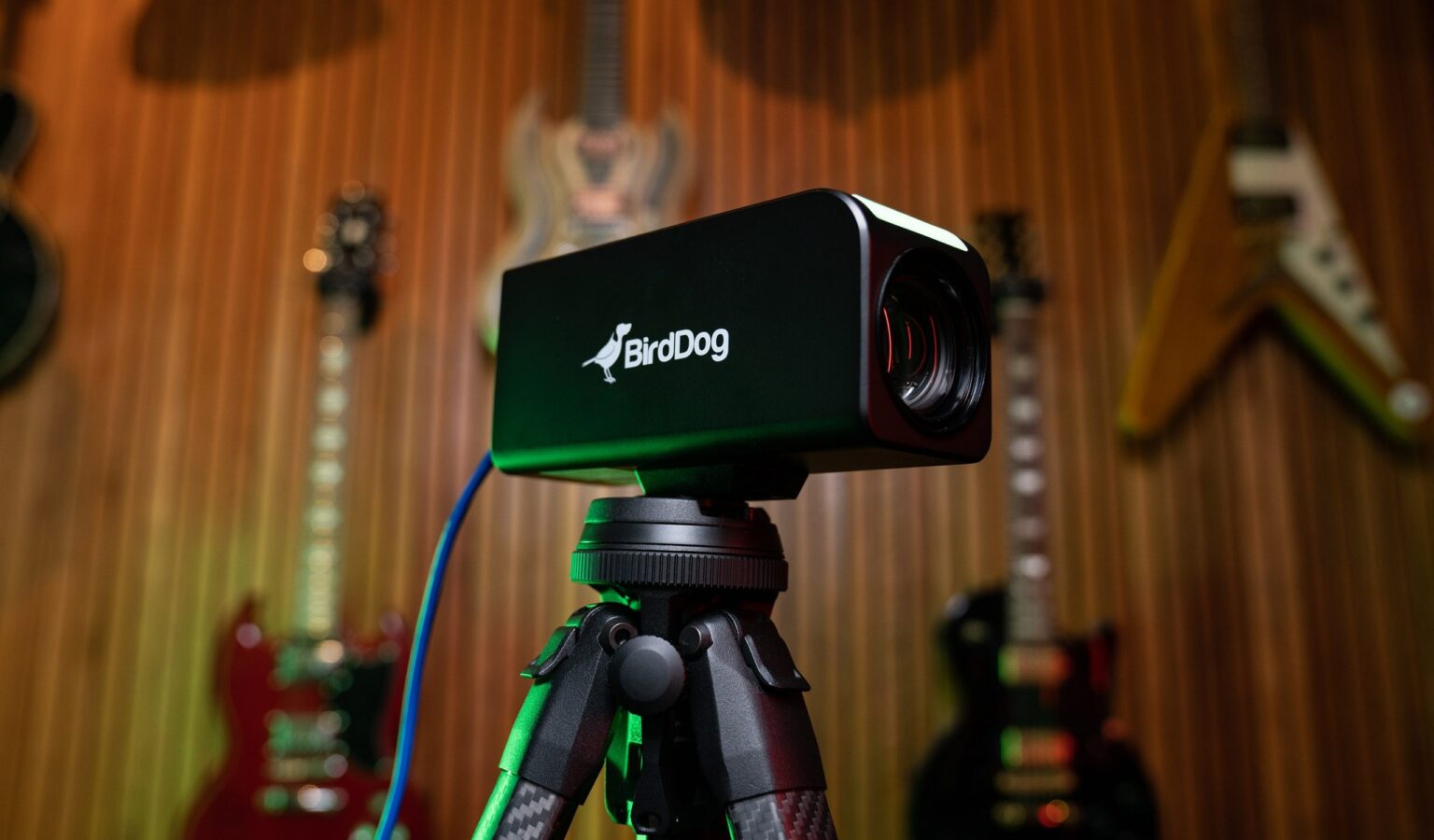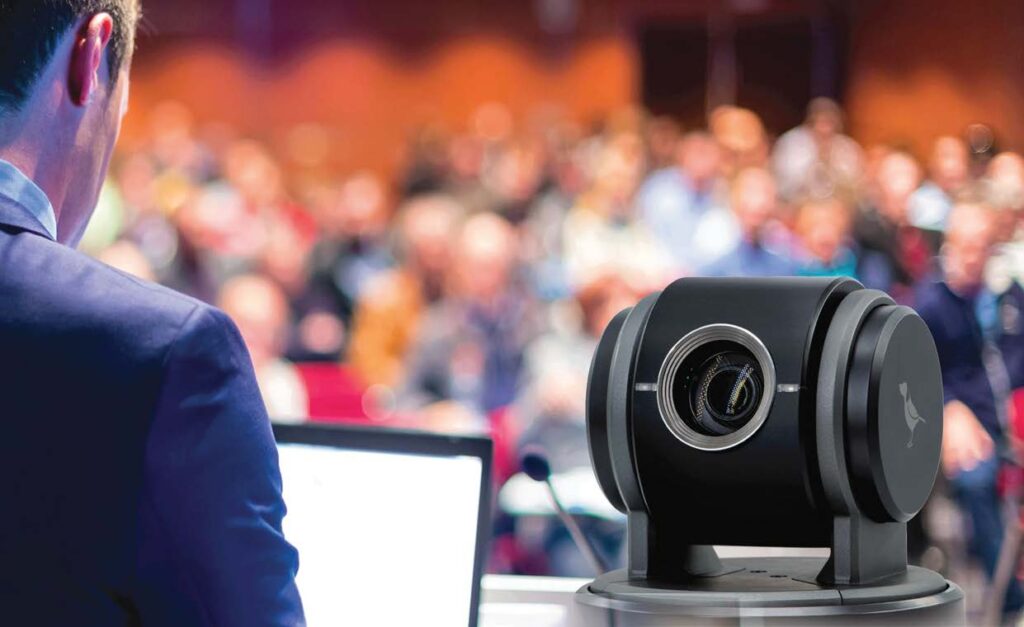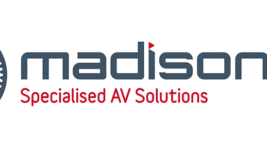News
29 Jun 2022
Tech Talk: What’s All The Fuss About NDI?

Subscribe to CX E-News
Network Device Interface (NDI) is exactly what it sounds like – an interface between devices on a network. Of course, most people are going to need a little more explanation than that, so we spoke to the company that created the system – NewTek – and specifically to their senior solutions architect, Liam Hayter.
“The main thing with NDI is that we’re what’s called a ‘software defined protocol’,” said Liam Hayter. “So, we allow you to move video, audio and metadata – camera control, camera tally, graphics data and the other data that goes behind running an event – all on a single standard gigabit ethernet.”
“As an example, you can take a PTZ (Pan-Tilt-Zoom) camera and with one single ethernet cable we can take the video and the audio from it or we can send the control to it, including activating the inbuilt tally light. We also support things like power over Ethernet, so even the power is coming through that one cable.”
Hayter added, “It’s the internet of video. Basically, we turn everything into data. We can very simply and easily turn input from HDMI and SDI ports, things that events companies have used for years, into data. That then lives on the network and, being data, anyone on that network can use it. Many people can use the same device, so NDI works as a distribution system, too, without you needing to run more cables.”
A Brief History of NDI
As innovative as this system sounds, it’s actually relatively long in the tooth, at least from a technical perspective. In response to a clear demand for relatively simple methods of connecting one device to another, NewTek created a precursor system to NDI that would solve this problem. As an example, imagine how many presentations you’ve seen delayed by the presenter and venue staff struggling to find the right connector to allow the presenter to use their own laptop. This can now be done wirelessly, instantly and free using NDI Scan Converter, but was still a relatively unheard of feat in early and mid-2000s.
More similar solutions kept getting added to this precursor software until NDI itself launched in 2014. NewTek then took the unusual step of giving it away for free; they made it open-source. It now appears in everything from OBS to VizRT (the parent company of NDI) and a load of homemade software, too. Following on from that, repeated requests for NDI within cameras has led to the development of NDI HX for use in big-brand cameras and even NDI’s own hardware.
NDI in Hybrid Events
Fast-forward to 2020 and SingEx, the operator of Singapore’s largest exhibition and meeting venues, hosted the city state’s Deputy Prime Minister as guest of honour at the post-COVID reopening of the Singapore EXPO & MAX Atria, hosting their first hybrid event using NDI solutions. Specifically, they used the NDI protocol and NewTek’s TriCaster 2 Elite mixing and broadcasting software.
“SingEx was delighted to have partnered with Ideal Systems to build our digital production and broadcasting capabilities to support our first hybrid event,” said Ang Chee Chiang, general manager of Centre Management, SingEx Venues, in a press release. “Ideal Systems worked closely with our technical team to design and build a fully functional system in a tight timeframe. They also trained and upskilled our production team and operators on the new system, shared valuable insights and advice, leading to the flawless execution of a very successful hybrid event.”
Fintan McKiernan, CEO of Ideal Systems Singapore added, “This was a great experience for us, to use the latest NDI and NewTek IP video technologies to drive a live international event of this scale, and we are honoured to work with companies like SingEx who have great technical foresight to leverage these new IP video technologies to overcome the challenges presented by COVID-19.”
One of the key advantages NDI systems have over other alternatives is the low cost for implementation. We’ve already mentioned that the software itself is open-source, which is the obvious saving. However, the other major one is the fact that you do not need to rewire your venue to use it. It all works through the standard Ethernet hardware most buildings already have. Additionally, NDI works with most off-the-shelf digital devices, minimising the need for purchasing specialist cameras and computers.
What is NDI Capable of?
Picture a hypothetical hybrid event. You may want multiple angles of what’s happening on-stage – no problem. You can add cameras and even smart phones with their built-in 4K cameras to the system and control them using NDI. You can toggle the dolly lights so that the presenter knows which to look at while they’re talking and you can carry a camera phone into the audience so that the video and audio of the Q&A session is perfect. Don’t want to carry the phone around? Hook up an NDI-controlled PTZ camera for crowd shots.
Want to make sure your audience is engaged, both including those in the building and those accessing remotely? You can stream the video feed from the cameras online, so everyone gets the best seat in the house. You can add graphics and other engagement systems to make sure that the stream isn’t reduced to second-monitor content.
Travel restrictions are preventing a lot of your speakers from making it to the venue? No problem. They can broadcast themselves and their computer screens directly to the event using software as common as Skype and Microsoft Teams. Both can output in NDI.
“Wherever your audiences are,” Hayter said, adding a lot of emphasis on the final ‘s’ and explaining that the events industry is now a lot more about multiple audiences and not just the ones who show up in person. “You can scale up and engage with them without leaving the NDI protocol. We can make sure that everyone’s included because we can use all of those existing devices and platforms that you’ve already got.”

Questions about Compression
The obvious question, and the one that Hayter is used to fielding, is one of image quality. An alumnus of the film industry himself, he recognises the need for high-quality footage wherever possible. And, despite using such basic hardware as ethernet, NDI software solutions are able to present extremely impressive results.
“We are fully broadcast quality. We can support up to 4K, though the protocol could go further. We also support non-broadcast ratios like vertical and square video. It’s completely compliant and agnostic to what you want to use video for,” Hayter said.
“We achieve all of this through low-latency compression. Basically, we’re reducing the amount of data with no loss of quality. We use a type of compression called DCT – Digital Cosine Transforms. It’s the same type of maths that you find in the post-production and production industries, where you have people recording into the likes of ProRes from Apple or DNxHD from Avid – they all use DCT as a means of encoding. It’s very gentle, so it keeps all the colour and resolution, but it reduces the quantity of data. We’re just taking the same system and applying it to live video.”
Naturally, there are limits. You can’t run 300 devices on the same network and expect it to stream at 4K instantly. However, under most circumstances, delays and disruptions are extremely small and getting smaller as devices develop. As for quality, most who have used NDI for events have reported not even noticing that the footage was compressed at all.
What do AV Specialists Think of NDI?
We’ve heard a lot from Liam Hayter and NewTek, but obviously they’re going to promote their own product. So what do AV professionals think of NDI? Who better to ask than the folks who ran SingEx’s first hybrid event – Ideal Systems South East Asia?
“Using NDI opens up a whole host of opportunities for broadcasters and Pro AV companies, and it does that by making the networking of video infrastructure more cost effective, more flexible and much easier to use,” said McKiernan in a YouTube video on the subject.
“Let’s take the example of a small studio you might be setting up for an event. A traditional AV company comes in and they’ve got an SDI video switcher and all the baseband cable and coax, and an SDI multiviewer. This is all specialist equipment coming in and all of it is expensive, and they’ve got a couple of broadcast engineers and they’ve got to find the guy who can terminate BNC on an SDI cable. Then picture the same scenario with a competing AV company doing the same event and setting up a studio next door. They come along with their NDI infrastructure and they just plug network cables into everything. The multiviewer is on a computer. The mixer is on a computer. And basically everything is really standard; there’s no specialist equipment.”
“It’s quicker to set up, and totally flexible. The more you get under the hood of NDI, the more you see those benefits. And it’s that flexibility and user-friendliness that gives great advantages in today’s AV and broadcast world,” he said.
Subscribe
Published monthly since 1991, our famous AV industry magazine is free for download or pay for print. Subscribers also receive CX News, our free weekly email with the latest industry news and jobs.






